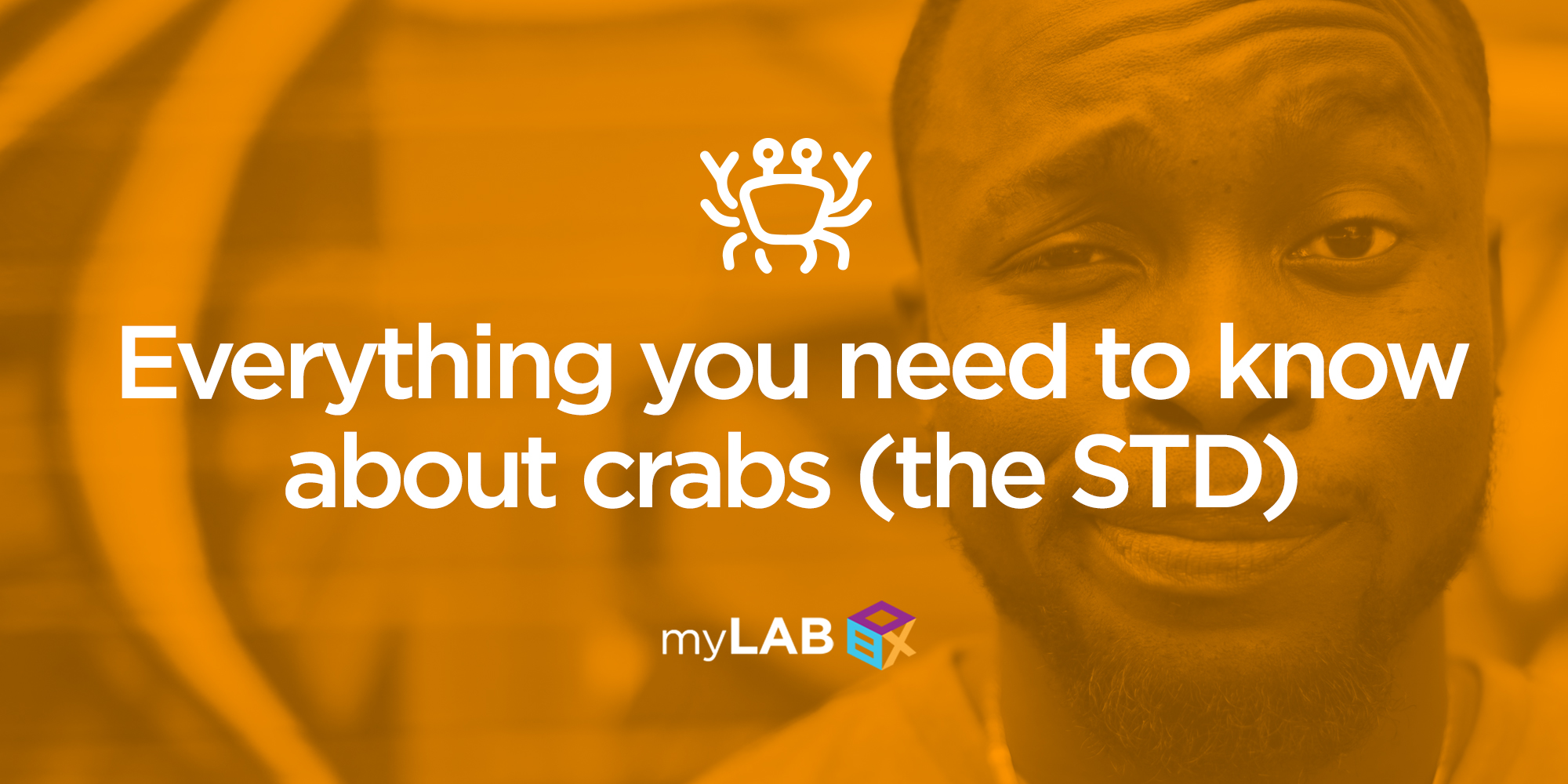Everything You Need to Know About Crabs (the STD)

Crabs are great at a restaurant, but today we’re talking about crabs the STD. While both types of crabs may be common “gifts” to receive during a date that ends in the bedroom, crabs the STD are a lot less fun.
Crabs may be uncomfortable, but it’s also one of the least damaging. However, it’s important to know a few things about crabs to be able to identify, treat, and prevent reinfection.
How Can I Identify Crabs?
The most obvious sign of crabs (also known as pubic lice) is an incessant itching in your undercarriage. Upon close inspection, you’ll see tiny whitish eggs (“nits”) attached to pubic hairs and you may even catch a glimpse of a pubic louse. Usually tan to greyish-white in color, they have claw-like legs on the front of their round bodies* and, as the nickname suggests, resemble a mini crab.
Crabs are generally found in the pubic area, but can also make a happy home in body hair on your legs, armpits, mustache, and even eyebrows. If you have had sex and the aforementioned symptoms ring true for you, all signs point to crabs. Fortunately crabs are easily treatable and don’t have any long-term side effects.
Treatment
Treat crabs with topical lotion or mousse containing pyrethrins and piperonyl butoxide, which are available without a prescription at most drug stores**. Shampoos used for treatment contain Lindane, which is a neurotoxin, so these are only available by prescription. If the crabs are on your face, you should see a doctor for ophthalmic-grade petrolatum ointment which, unlike these other treatments, won’t harm your eyes**.
Once you’ve applied the medication per the instructions, use a fine-tooth comb to peel the lice eggs from your hair. Then, pop on some clean undies and you’re one step closer to being itch-free.
Preventing Re-Infection
When you’ve dealt with the ‘infestation’, you should cast out the little demons from your living space, too. You’ll need to exorcise any soft material (clothing, towels, bedding, carpets) in your home–or other areas you’ve accessed the last 3 days. Throw what you can in the laundry, send it to the dry cleaner, or seal them in plastic garbage bags for two weeks.
Pubic lice can’t survive away from a human body for more than three days, so you should be in the clear pretty quickly. But if you have crabs, make sure you tell all recent sexual partners and ensure they’re crab-free before your next date, or you’ll be doing this all over again before you know it.
The Bigger Picture
A case of crabs could make for an extra busy week, but that’s where the life changes stop. As you’ve seen, it’s a relatively easy infestation to clear up. You won’t need ongoing treatment or have repeat outbreaks, as long as you ensure your past and future partners are crab-free.
That said, Crabs may not be a serious STD, but it indicates that you’re at risk for other, more serious infections. It’s important to be fully tested to make sure you’re safe and healthy.
Crabs go hand in hand with other STDs and STIs. Get tested at home and know your status.
Reviewed by Luis Ferdinand M. Papa, MD, MHA
- . Pubic Lice (Pthirus pubis): History, Biology and Treatment vs Knowledge and Beliefs of US College Students. International Journal of Environmental Research and Public Health. 2009.
- . The “nuisance” sexually transmitted diseases: molluscum contagiosum, scabies, and crab lice. The Medical Clinics of North America. 1990.
- . Itch and scratch: scabies and pediculosis. Clinics in Dermatology. 2006.
- . Pubic “Crab” Lice. 2013.
- . Pubic “Crab” Lice – Treatment. 2015.
Popular Tests

Total Box
14 Panel STD Test
In Stock – Free Shipping
$369 – $399
